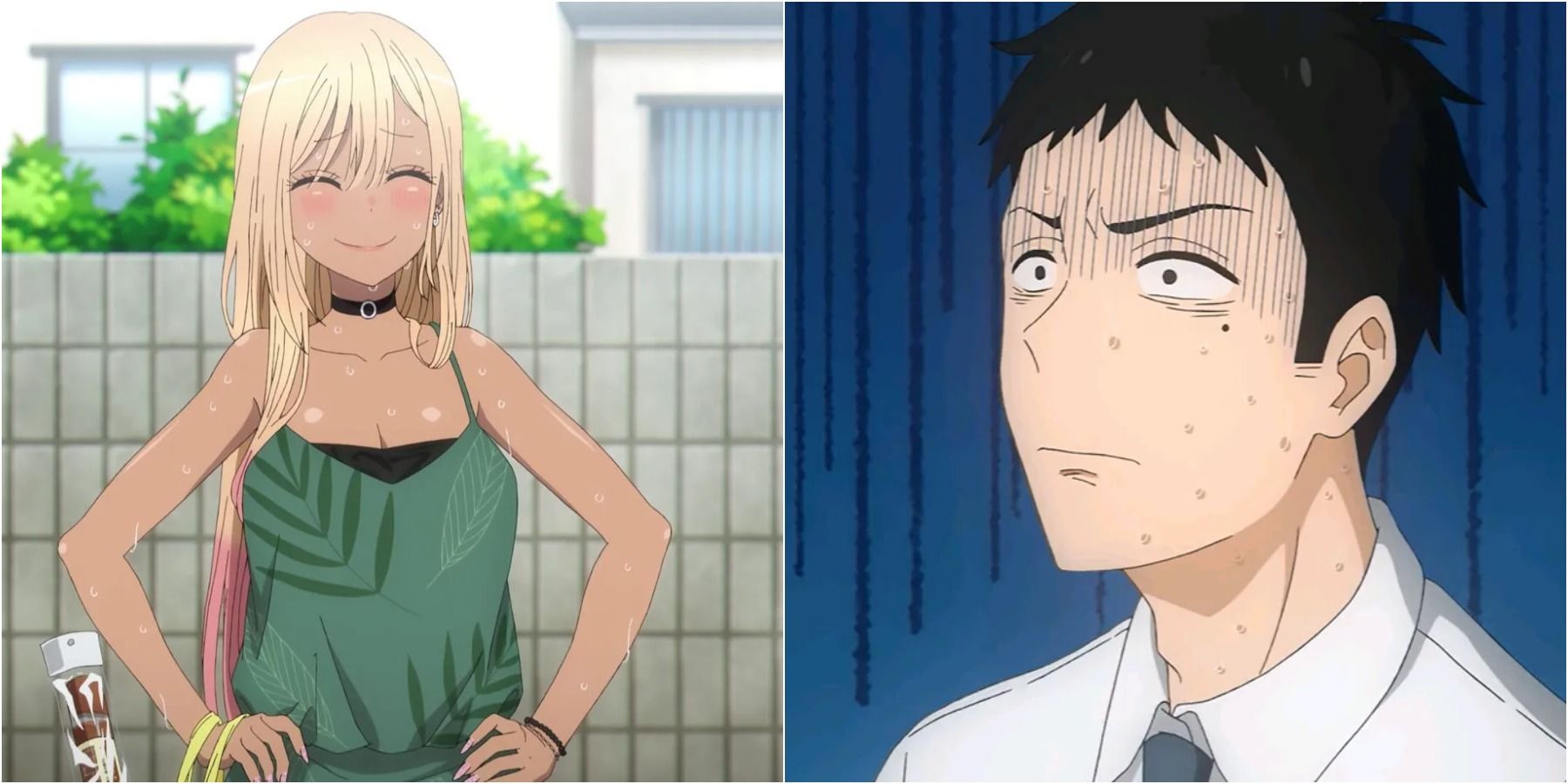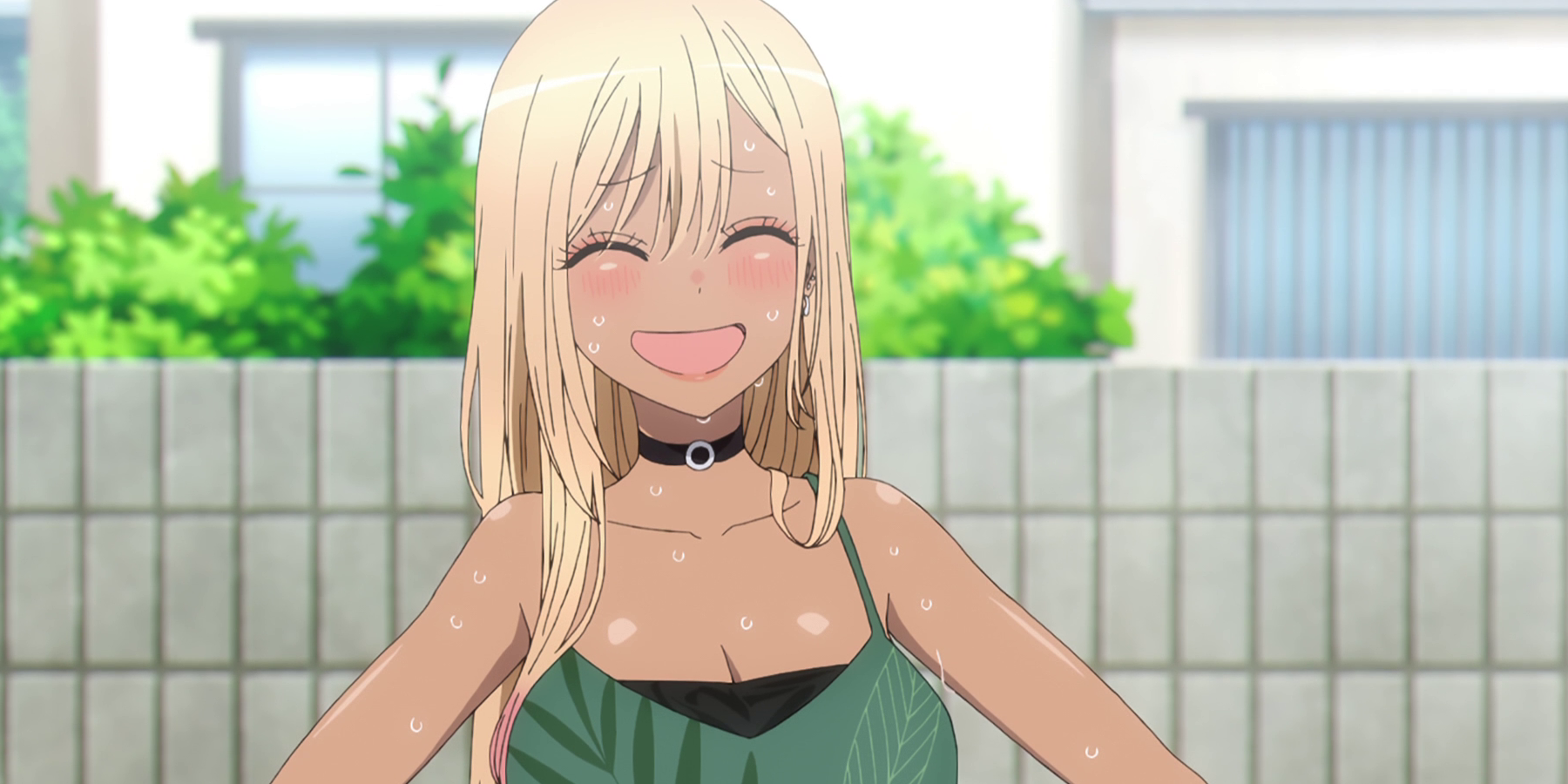My Dress-Up Darling! is one of 2022 winter season's standout romance and slice of life titles, and it has garnered a lot of positive attention for its storyline about anime fans who love to cosplay. It has been a fun and refreshing show following in a long line of romance anime featuring an unassuming main character and a manic-pixie dream girl heroine, but the show oversteps some serious boundaries in one of its later episodes!
In the 11th episode of My Dress-Up Darling!, Marin wishes to cosplay a sharp-toothed thief from one of her favorite shows; however, the character has much darker skin than Marin, which poses a cosplay challenge. Marin; who wants to be as close to a real-life depiction of a character as possible, mulls over how to overcome the glaring deviation from the character that her lighter skin poses, but the way she goes about it falls into a well-known issue; blackface.
"Blackface" is a term used to refer to the use of dark makeup to mimic the appearance of black people, but it has also been used more recently to refer to makeup used to mimic the appearance of those who are darker-skinned in general. It has history in minstrelsy, which has roots in 19th century America as a form of racist entertainment. These racist depictions of black people often featured dark skin and exaggerated facial features such as thick pink lips and flaring noses.
What Kitagawa Marin performed in episode 11 of My Dress-Up Darling! is known in Japan as "ganguro", a form of darkened makeup or tanning that was also often paired with flashy accessories and fashion to complete the aesthetic many fans and Japanese people know as the "gyaru".
Gyaru
"Gyaru" is simply a Japanese pronunciation of the word "gal", and in context, it refers to a particular counterculture in 1990s Japan in which proponents would be inspired by punky, gritty aesthetics. There are various subcultures that all fall under "gyaru", and part of the philosophy of the gyaru aesthetic was the embracing of various "generally unattractive" components with the intention of creating an elevated beauty. The rough, loud, boorish gyaru archetype was a polar opposite of the personification of the ideal Japanese woman – the Yamato Nadeshiko – and was thus also a modern mode, albeit perhaps also a subversion of, Japanese femininity.
One of the major ideas behind the gyaru archetype is the subversion of beauty standards for Japanese women, standards in which lighter, fairer skin is favored. The problem is that the inherent belief of the quintessential ganguro gyaru is that darker skin is in fact not as beautiful which is evident through the use of darker skin as a tool in their subversion of this beauty standard in the first place.
Gyaru characters are prevalent in anime, both in and out of ganguro, and are representative of a genuine culture that exists to some extent; however, oftentimes characters in ganguro have been mistaken to be darker-skinned, or black people. Characters like Food Wars! character Mito Ikumi, Don't Tease Me, Miss Nagatoro!'s titular character, Nagatoro Hayase and also Fire Force's character Princess Hibana are all representations of the ganguro gyaru, with heightened fashion sense, a level of sexual undertones that permeate their very personalities, and darkened skin all commonly misunderstood to be black people, but their skin color is usually related to tanning, which one would think is benign.
Among black fans of anime and manga, particularly black cosplayers, have been major sentiments about the level of racism that they are subjected to by other fans. This is prevalent throughout the anime and manga community, throughout gaming, and in various circles of so-called "nerd" and "otaku" culture. Black cosplayers are told that they cannot cosplay anime and video game characters because the majority of them are not black. This myopic view of what cosplay should be, and what "accuracy" is with regard to depiction is important because while black cosplayers are told they cannot, white cosplayers do virtually every popular character in media regardless of race or complexion.
Marin and Gojo's actions in episode 11 of My Dress-Up Darling! only serve to further the idea that in order to cosplay, you owe people "racial accuracy" on top of the various visual markers that help identify a character. Rather than simply go as far as to assume the character's wardrobe and demeanor, something which would have made her identifiable as that character despite the differences in skin color, Marin chooses to do blackface. The former would have been an interesting foray into how cosplayers who don't necessarily look like their favorite characters can still enjoy depicting them, and create awesome cosplays regardless of differences in identity.
Unfortunately, one of the major flaws of My Dress-Up Darling! is the fact that the characters continuously emphasize that cosplay is about love for the character, but also largely about if you have the physical appearance required to cosplay a certain fictional character, to begin with. This seems confusing, as the series often draws upon the sentiment that one does not have to be any kind of person to enjoy the things that they enjoy without shame, but features characters who avoid certain cosplays because they aren't the "correct" identity for it. All of these factors add to the particularly harmful environment experienced by cosplayers, but also brings us into the territory of interrogating aspects of culture that we keep coming back to and assessing whether these things are truly as benign as we think.


.png)
